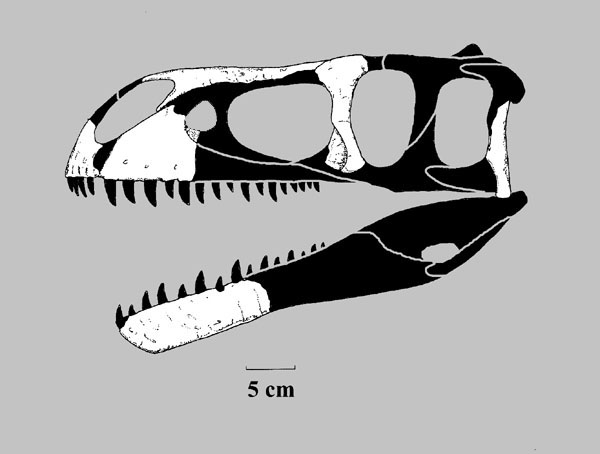
Genus: Eotyrannus HUTT, NAISH, MARTILL, BARKER & NEWBERY, 2001
Etymology: Greek, eo, "early" and Greek, tyranus, "tyrant";
in allustion ot tyrannosauroids as ‘tyrant dinosaurs’.
= Fusinasus HUTT, 2002 (nomen nudum)
= Gavinosaurus KELLY, 1998 (nomen nudum)
= Kittysaurus HARGREAVES, 2001
(nomen
nudum)
= Lengosaurus KELLY, 1998 (nomen nudum)
Species: lengi HUTT, NAISH, MARTILL, BARKER & NEWBERY, 2001
Etymology: In honor of Mr. Gavin Leng, who discovered the specimen.
= Fusinasus lengi HUTT, 2002 (nomen nudum)
Holotype: MIWG 1977.550
Locality: Southwest coast of the Isle of Wight, Isle of Wight County, England, Southern United Kingdom.
Horizon: Wessex Formaton, Wealden Group.
Biostratigraphy:
Age: Probably Barremian Stage, Lower Gallic Subepoch, Middle Early Cretaceous Epoch, Early Cretaceous.
Material: Both dentaries, right premaxilla, anterior portion of left maxilla, fused nasals, right lacrimal, left quadrate, neural arch of axis, cervical, dorsal, sacral and possible caudal vertebrae, both scapulae, left coracoid, and fragments of ilia, both humeri, a possible radius, a portion of right ulna, a carpal, metacarpals I, II and III, phalanges including unguals, proximal 2-3rds of left tibia, left fibula, metatarsals, and phalanges including an ungual.

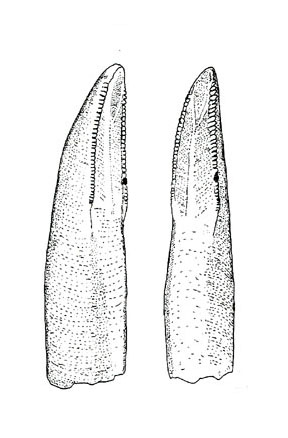
Premaxillary tooth.
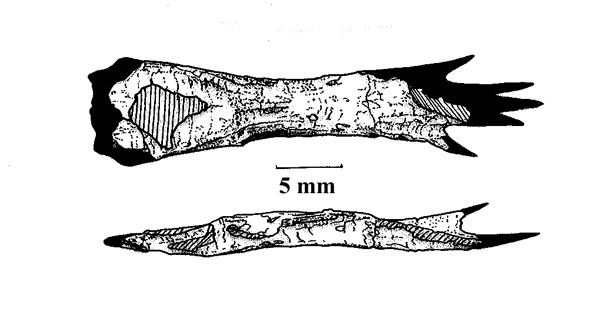
Nasals.

A) Fragmentary premaxilla; B) Fragmentary maxilla, and C) distal dentary.
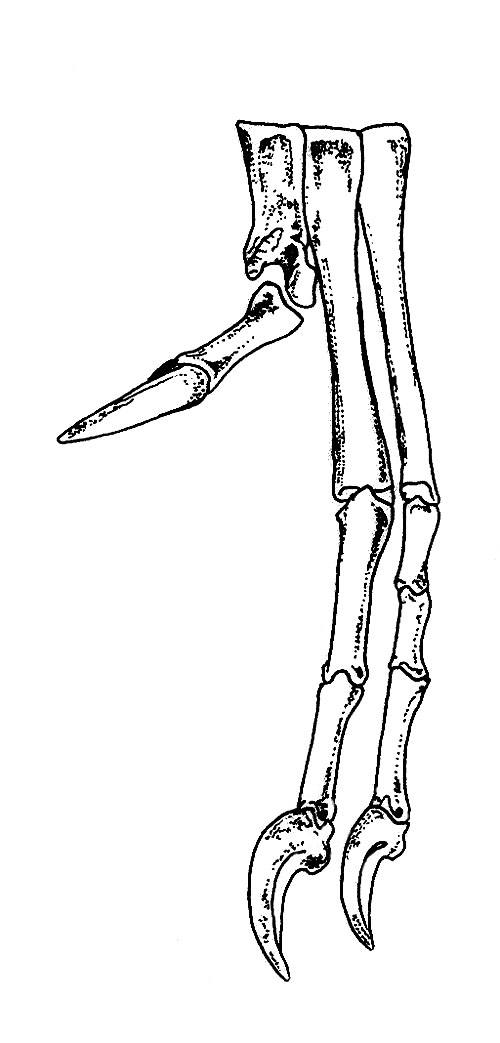
Manus.

Humerus with A) Premaxillary tooth; and B) Valdosaurus sp tooth root.
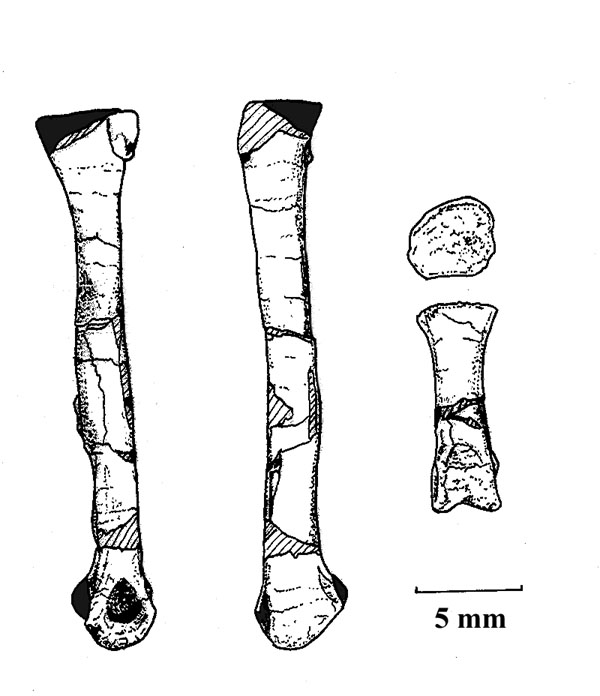
Metatarsal and phalange.
